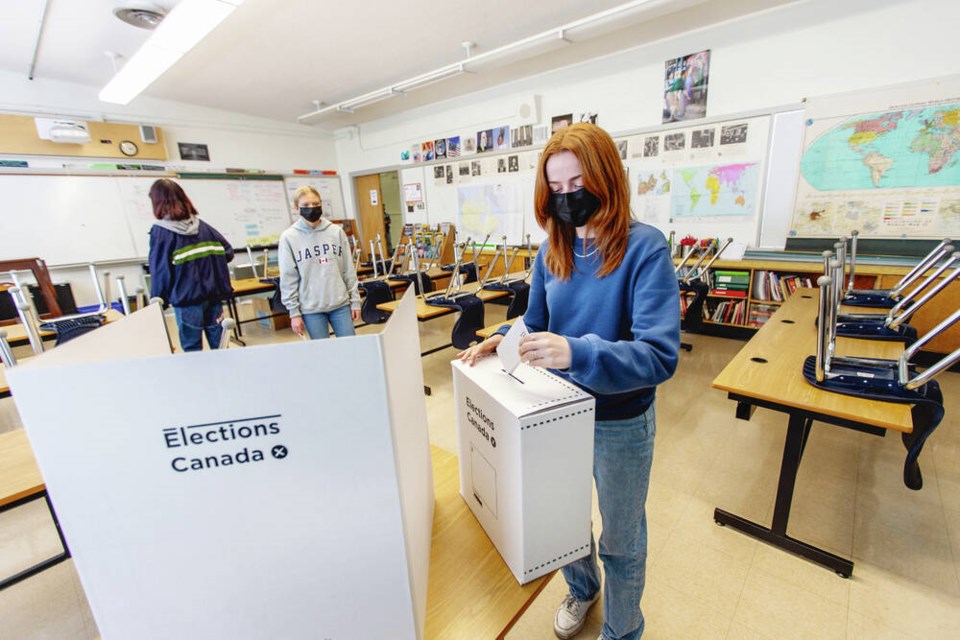They may be too young to cast a real ballot, but thousands of students across Greater Victoria were able to take part in the federal election through Student Vote Canada.
A total of 35 schools in the Greater Victoria School District held their own votes, along with 15 in the Sooke district, 13 in the Saanich district and six from the Gulf Islands.
They were among 700,000 elementary, middle and secondary school students from all 338 federal ridings across the country to cast ballots.
In the student vote, the Liberal Party won 117 seats and 24% of the popular vote, forming a minority government, while the NDP won 107 seats and took 29% of the popular vote, forming the official opposition.
The students gave the Conservative Party 91 seats and 25% of the popular vote, the Bloc Québecois 20 seats and 2% of the popular vote and the Green Party three seats and 10% of the popular vote.
They voted in Liberal Leader Justin Trudeau, NDP Leader Jagmeet Singh and Conservative Leader Erin O’Toole, but tossed out Bloc Quebecois Leader Yves-Francois Blanchet and Green Party Leader Annamie Paul.
At the Sooke district’s Belmont Secondary, close to 500 of the school’s approximately 1,500 students voted on Monday, said teacher Reisha Williams.
Students from a “huge range” of classes stepped up to vote, especially those in social studies courses, said Williams, whose primary subjects this year are Spanish and psychology.
Williams said she has organized Student Vote a number of times, running it for several years out of Edward Milne Community School in Sooke before moving to Belmont this year.
She said it’s an opportunity for students to use their research skills in learning about the candidates in their ridings and how government works. “Then they get to critically think about who best aligns with their values, and place their vote and be engaged in their community.”
The Student Vote program, which is also held in conjunction with provincial and municipal elections, was started in 2003 by CIVIX, a national charity dedicated to helping young people become involved citizens.
CIVIX program manager Ruth Matthew says the mock election gives students the opportunity to practice voting before they turn 18 — in some schools, even kindergartners participate.
Most of the voting happened Monday, although some schools collected ballots on Sept. 17.
Overall results were available Monday night after the real polls closed. Individual schools kept tallies under wraps until then.
Organizing teachers can see the vote breakdown provincially and in their home ridings — and how their schools fared in comparison to student results across the country, Matthew said.
She said Student Vote “demystifies the process” and creates good voting habits, noting there is a correlation between voters casting ballots when they’re first old enough and continuing to vote in future elections. “The goal is to create informed and lifelong voters.”
Taylor Gunn, president and CEO of CIVIX Canada, said when the campaign began, the group was uncertain how many schools would participate given the limited time.
“Teachers have exceeded our expectations. We would like to thank teachers for dedicating time to the program and for helping educate future voters. Our democracy will be stronger because of you,” Gunn said.



